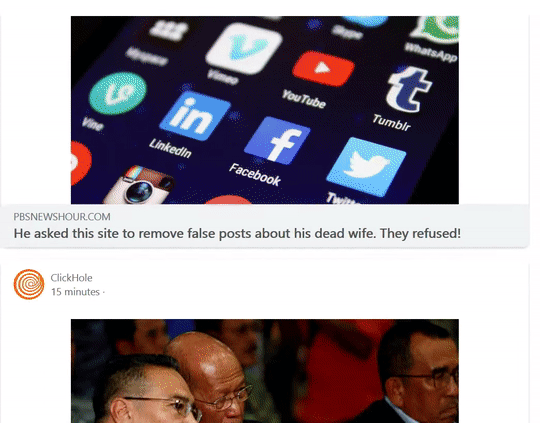Imagine that you are scrolling down a social media feed. You’re catching up on news you missed, and you see news articles from a number of different sources.

As you scroll you may find the posts feel as if they’re blending into one another even though articles come from such different sources as BBC News or from a blog.
This can be called the source blindness effect, which suggests that certain online environments (like vertical-scroll online feeds) cause individuals to be “blind” to differences between sources when passively scrolling.
But there’s another theory, called prominence-interpretation, which suggests that people first notice the most “prominent” visual elements and make a judgment (or interpretation) about them when they decide what to trust.
These theories have implications for democracy. What if news consumers could be nudged toward paying more attention to the source of information?
In the images below there are two fictional news stories. On the left is how stories are currently presented on Facebook. On the right is an alternate universe where the source is more “prominent.” Would participants pay more attention to sources if social media presented them like this?
I hypothesize that high source prominence (on the right) will increase how well participants recall what sources they viewed.
I then hypothesize that high source prominence will increase the perceived credibility of professional news sources (i.e. BBC News, AP, etc), and decrease the perceived credibility of non-professional news sources (such as someone’s blog).
Finally, I hypothesize that high source prominence will cause participants’ perceptions of a source’s credibility to be more similar to what they would be if viewing the source in isolation.
Methodological notes: 2×2 mixed online experiment. Factorial levels,
Source Prominence:
- Low Source Prominence
- High Source Prominence
Headline Distribution:
- Professional sources with informative headlines and non-professional sources with clickbait headlines
- Professional sources with clickbait headlines and non-professional sources with informative headlines
Participants to be recruited through MTurk (or hopefully an alternate method with better data validity). Independent samples t-tests and ANCOVA to test results.

